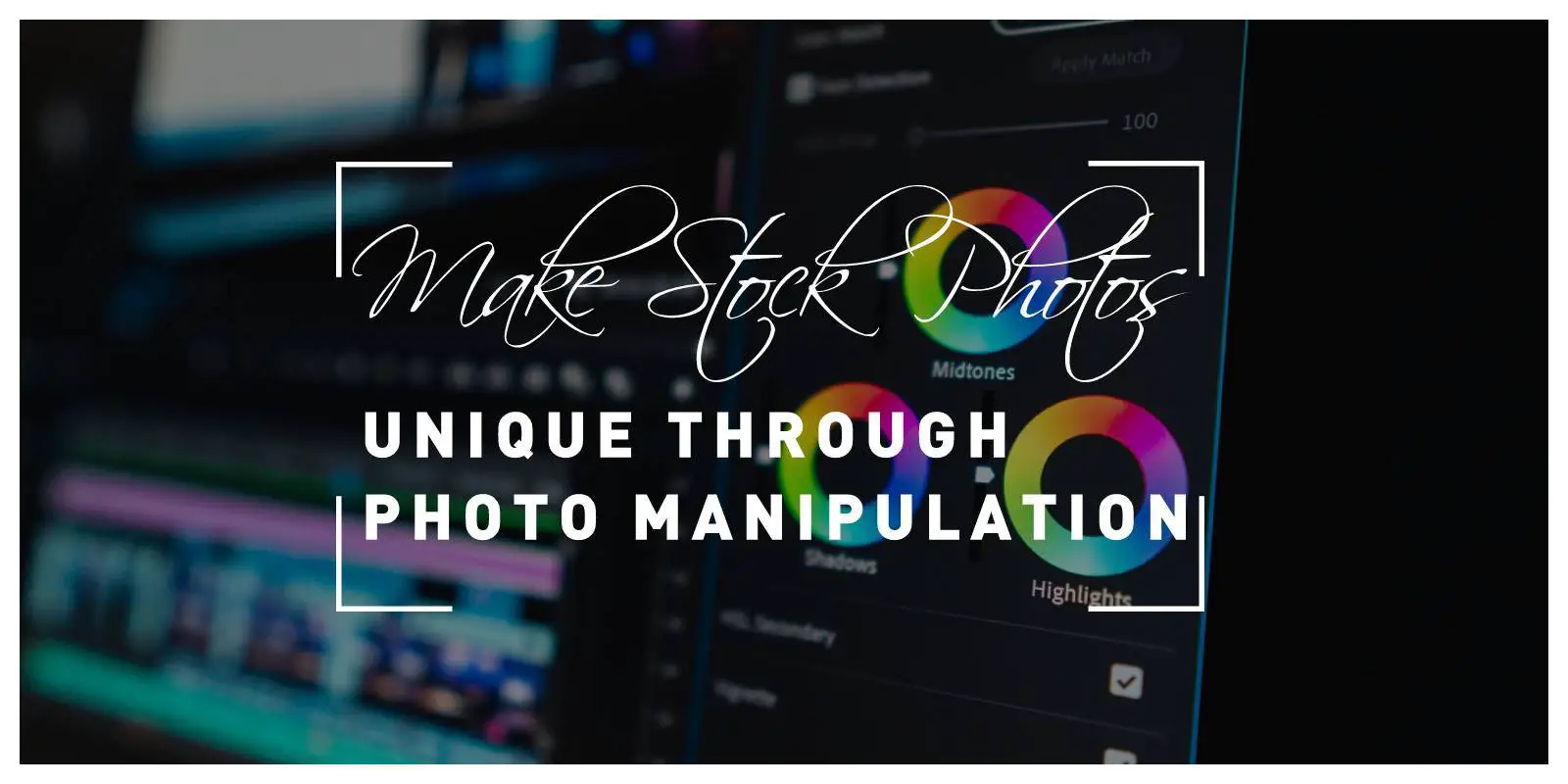Stock photos are a handy tool in any marketer’s toolbox, but if you’re looking to stand out from the crowd, you run the risk of accidentally using an image your audience has seen 100 times before.
You could hunt to the ends of the earth for something fresher- or you could use photo manipulation to open up a whole new vista for your post.
Retouching- an Ancient Art

While ‘PhotoShopping’ has become synonymous with image manipulation, photographers and editors have been retouching, recombining, and reworking images as long as photography has existed.
Whether it’s for arty, surreal projects, or your latest blog, it’s a legitimate digital art field- and the possibilities are, honestly, endless in the right hands.
Keeping It Ethical
However, that doesn’t give you license to ‘use this power for bad,’ however! History is also littered with numerous ‘fake news’ incidents promoted through manipulated images.
You want to make sure you credit the people who contribute to the image, should never use manipulation as a way to ‘get away with lies and fakery and should honor the original artist’s vision.
Making Smart Images Through Manipulation

Also, bear in mind that anything that can be done well can also be done cringingly badly. And the last thing you want near your brand image is ‘cringeworthy.’ That’s not the viral marketing you’re looking for! So, unless you’re going all-out for a true art piece, which most marketers aren’t, keep it simple.
Have a clear idea of what you want to achieve, and don’t get distracted by fancy effects. Don’t be ‘that guy’ using it to ‘insert a random ethnic’ into a picture poorly, either! Instead, create a powerful statement.
What is a good commercial use of photo manipulation, then?
- Removing confusing or irrelevant elements in the frame
- Adding brand identity
- Directing the view
- Making an image more relevant to your message
You want to keep your stock photos realistic and grounded. This means paying attention to lighting, shadow, perspective, and color-matching, especially when combining two photos. Remember that, while powerful, photo editing isn’t like TV, where you can turn someone around in the photo or zoom in endlessly!
Make sure you’re choosing relevant and high-quality stock images to start with, and simply use manipulation to bring them on point. Make sure any combination or tweak you make:
- Has the same perspective throughout
- Match color and lighting, so it’s seamless to the eye
Consider using your own created photo shoots so that you can control and match these easily. If you want to aim for the other end and create images that are very different from the original, you can cartoonize a photo. This is where you completely change the appearance of the photo into a cartoon. It will look extremely unique and attract a ton of attention.
Realistically Manipulating Stock Photos
Unlike a digital artist, you’re probably trying to simply make a unique image for your brand, not create new fantasy worlds. What are photo manipulation techniques useful to you?
- Composite photos: As we mentioned, you can combine two overused images to make something more unique. But always remember it needs to be done well, or it reflects poorly on your brand.
- Create fun effects: You can add subtle effects to images to draw attention to specific images or simply add brand personality. This can easily be overdone and look tacky, so use a light hand. But double exposure, adding cartoon or brand elements to realistic photography, altering a sign relevant to your article, and other small tweaks are great ways to spice up your visual content.
- Solidify Thematic Elements: Themes are always good, be it for your portfolio or across your brand, and photo manipulation can help solidify this.
Conclusion
These are, of course, quite complex skills. Don’t expect just anyone to open up PhotoShop and achieve brand-boosting, classy effects. Typically you will want someone with real graphic design experience to make sure the effects are slick, not embarrassing.
But photo manipulation is a new way to shake up stale old stock photos, especially in niche industries, help you get more out of photoshoots you paid for, and generally breathe fresh brand life into a shared stock photo pool, so don’t be afraid to experiment with images!

